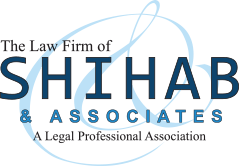 This year marks the 10th anniversary of the PERM regulations, which govern the labor certification process for the permanent employment of immigrant foreign workers and establish responsibilities of employers who wish to employ these workers permanently in the United States. The Department has not comprehensively examined or modified the PERM requirements and process since its inception in 2004. However, pursuant to President Obama’s Executive Action on Immigration, the U.S. Department of Labor recently announced its plan to review the PERM labor certification program and relevant regulations, in an effort to modernize the program to be more responsive to changes in the national workforce.
This year marks the 10th anniversary of the PERM regulations, which govern the labor certification process for the permanent employment of immigrant foreign workers and establish responsibilities of employers who wish to employ these workers permanently in the United States. The Department has not comprehensively examined or modified the PERM requirements and process since its inception in 2004. However, pursuant to President Obama’s Executive Action on Immigration, the U.S. Department of Labor recently announced its plan to review the PERM labor certification program and relevant regulations, in an effort to modernize the program to be more responsive to changes in the national workforce.
As part of its review, the DOL has specifically stated it plans to seek input on the following, with aims of modernizing processes and improving efficiency:
- Options for identifying labor force occupational shortages and surpluses and methods for aligning domestic worker recruitment requirements with demonstrated shortages and surpluses;
- Methods and practices designed to modernize U.S. worker recruitment requirements Processes to clarify employer obligations to insure PERM positions are fully open to U.S. workers;
- Ranges of case processing timeframes and possibilities for premium processing; and
- Application submission and review process and feasibility of efficiently addressing nonmaterial errors.
One factor that has led to the need for change of the PERM regulations is the advancement of technology and information dissemination. With a global workforce, it is now common to find employers headquartered in one state and employees working and residing in another. The relationship between the employer’s location and the employee’s location can affect the pre-PERM and PERM stages, the I-140, and the final green card application. As a result, it is essential that the employer, employee and attorney work together to create a clear definition of, and congruent expectations for, the job position (now and in the future).
Employees and Travel – What this means for PERM applications
At the initiation of the green card process, employers are looked to for a definition of job duties the employee will perform. With new trends, employees are traveling more, and what was once the traditional definition of worksite has become less clear. Traveling employees can be divided into four categories: telecommuters, roving employees, employees required to travel to non-worksite locations, and employees relocated for long-term placements. It is essential for all parties involved to understand the differences between these categories and the impact they may have upon the PERM and future applications. This clear understanding not only allows for more efficient PERM preparation, but also protects the employee from problems that may potentially arise years after the filing of the PERM application.
Four Types of Traveling Employees
1. Telecommuting employees
Telecommuting employees, or remote workers, are typically employees that work from home, and periodically report to an office. Although not typical in the U.S., workers who work 100% of the time from home are also included in this category. In this situation, it is important to identify whether the employer allows or requires the employee to work from the specified geographic location. If it is a benefit afforded to the employee by the employer, then recruitment should typically be performed in the state where the employer is headquartered, while apprising potential workers of the possibility of working from home. If the employer requires the employee to be working from home in a specific geographic location, it may be more prudent for the recruitment to take place in the geographic region of intended employment.
2. Roving employees
Roving employees are those whose job duties are characterized by frequent travel. They begin by working at the employer site, but then move around to other worksite locations. In these situations, recruitment should be done for the headquarter location. An exception may arise if the employer has other offices throughout the U.S., and the employee routinely works out of and reports to an office different than the headquartered location.
3. Employees required to travel
Employees required to travel are typically those that attend 2-3 conferences for short periods of time, travel to locations that do not constitute worksites, and do not necessarily engage in productive employment while on these assignments. In this case, the area of recruitment should be the permanent office location.
4. Long-term placements
If it is determined that the employee is one that has been relocated for a long-term project, but it is unknown whether the employee will still be assigned to the same geographic area several years from now, it has been generally agreed upon that all recruitment activities should be performed for the location in which the employer’s headquarters is located. This is because, while the employee is assigned to long-term projects which may last for several years, the employment opportunity will always originate from the employer’s headquarter location.
It is important to remember that each and every job opportunity is unique, and therefore must be analyzed independently to determine the best course of action in the recruitment stage. Regardless of the job duties required, it is essential that the employer apprise potential U.S. workers of the requirement for frequent of travel and or relocation to perform the job duties. Short-term non-productive travel, such as attending conferences, is inconsequential and disclosure in advertisements may not be required. International travel, however, even if only 2-3 times per year, should be disclosed to the potential employee, as international travel is more demanding than domestic.
Looking Ahead
With more than 70,000 PERM applications submitted this past fiscal year, and the change in the demand for and availability of qualified U.S. workers, it is clear that this area is ripe for improvement. Unfortunately, revised PERM rules aren’t set to be finalized until spring of 2016, and as a result, employers must be able to navigate murky waters under outdated regulations. PERM applications require careful preparation, so as to ensure a smooth finish of the PERM process all the way through to the application for permanent residency.

